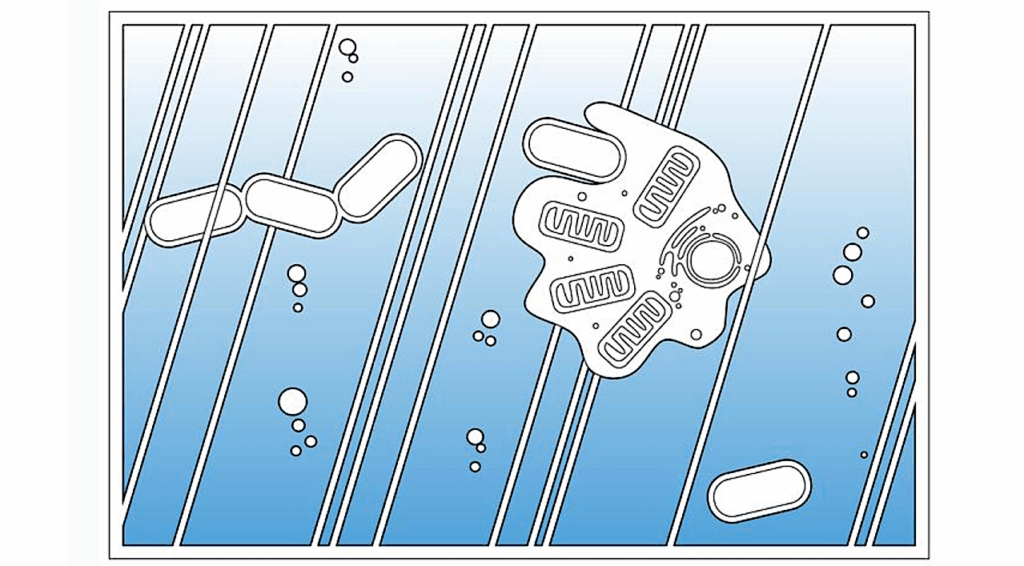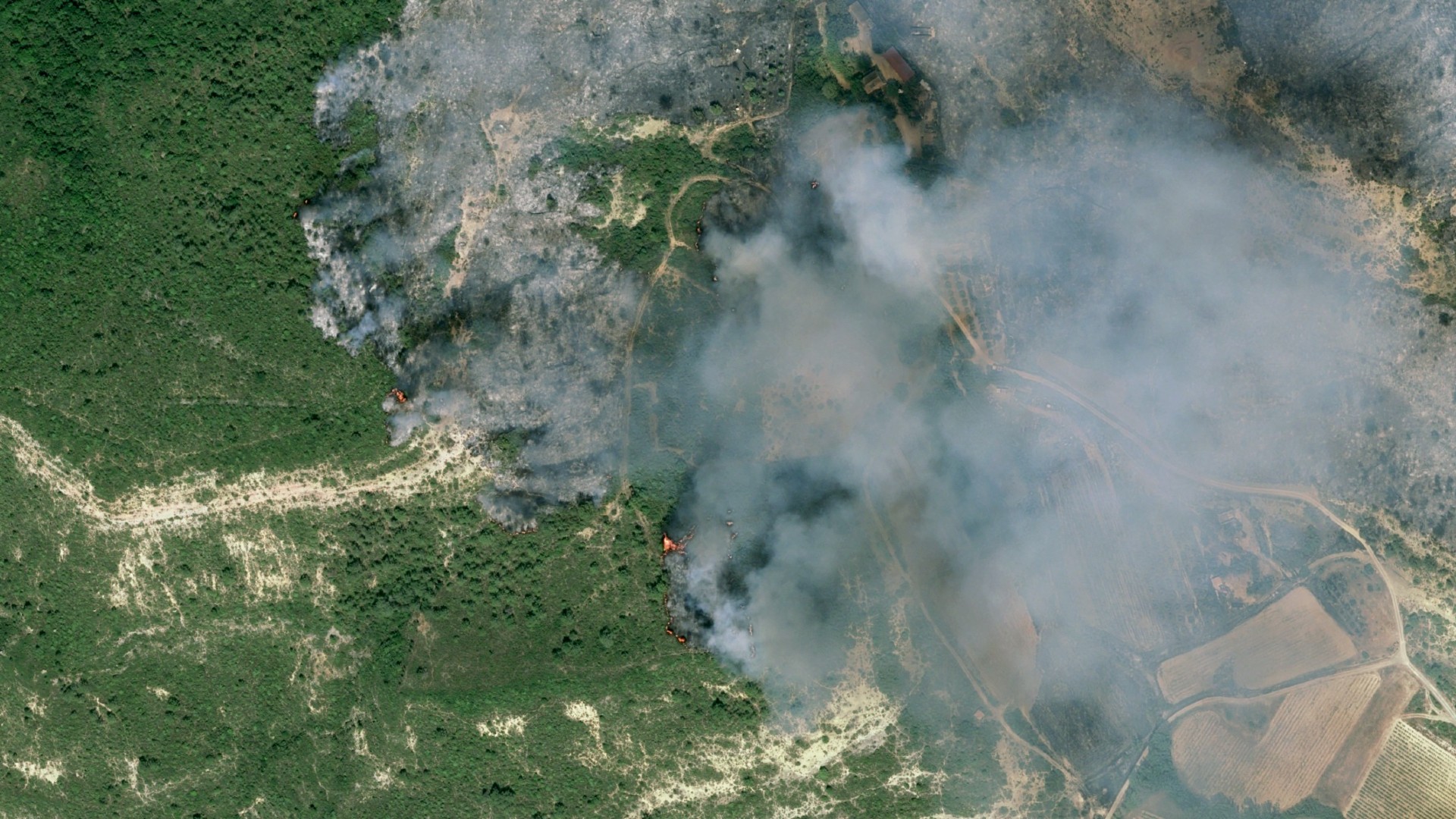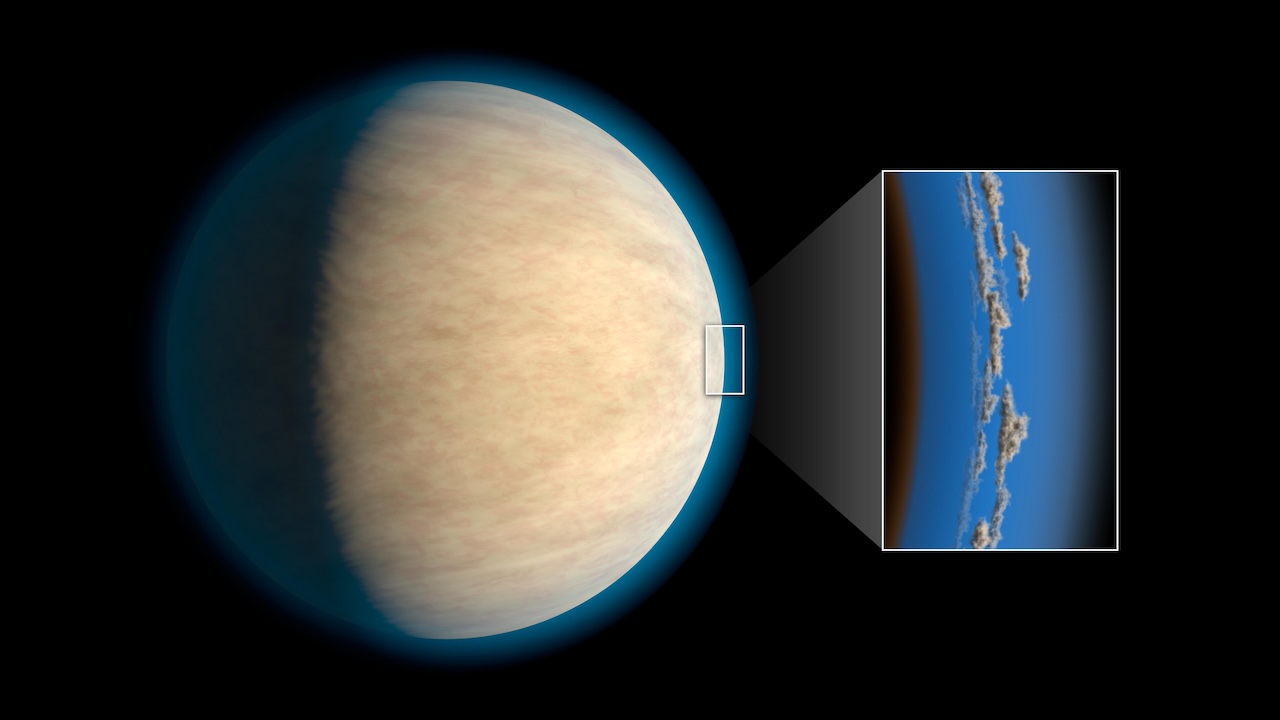Now Reading: Flares On TRAPPIST-1 Reveal The Spectrum Of Magnetic Features On Its Surface
-
01
Flares On TRAPPIST-1 Reveal The Spectrum Of Magnetic Features On Its Surface
Flares On TRAPPIST-1 Reveal The Spectrum Of Magnetic Features On Its Surface
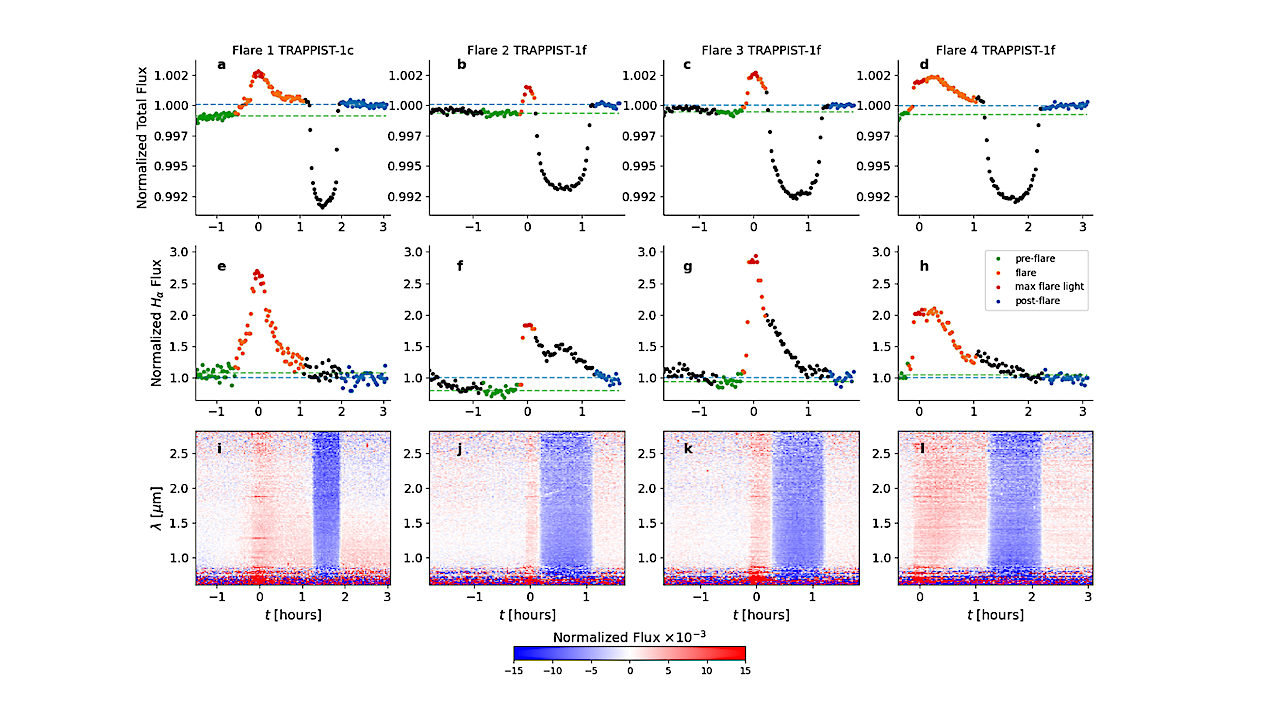
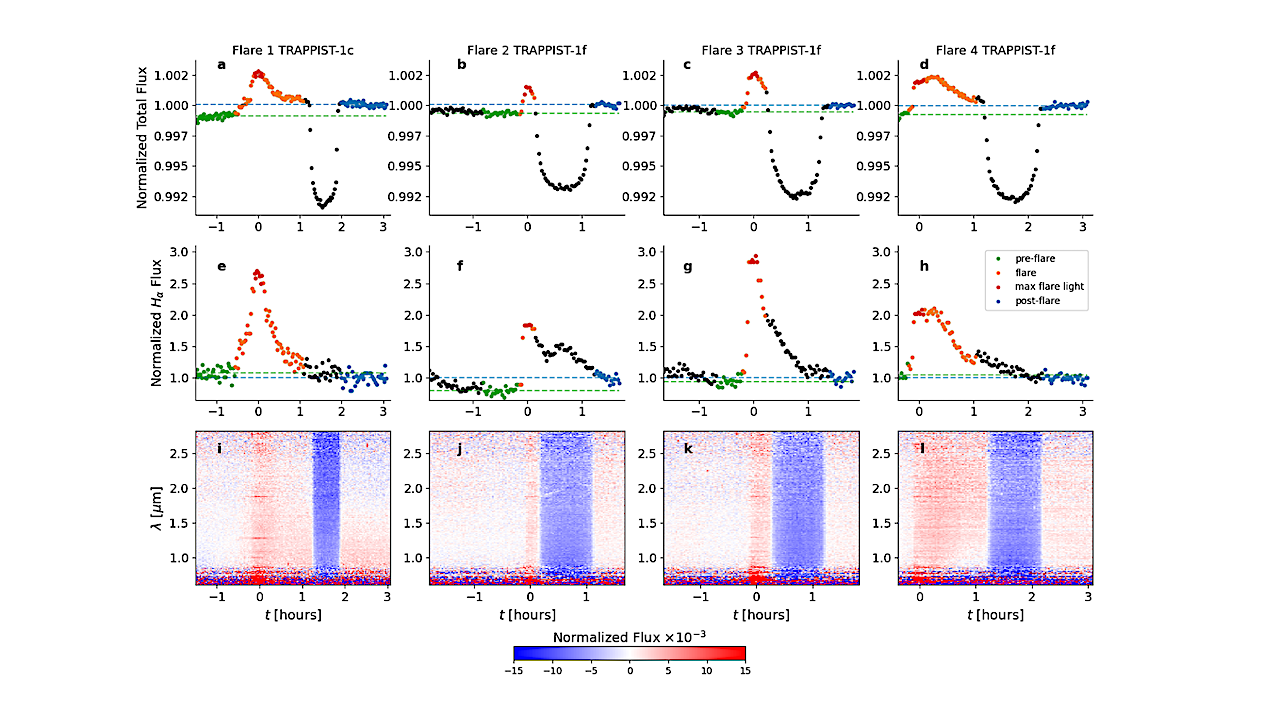
Stellar flares observed in JWST/NIRISS time-series spectroscopy of TRAPPIST-1. Each column shows one flare event during transits of the TRAPPIST-1c or TRAPPIST-1f planets. Tow row: Light curves with the total flux (integrated over the full spectral range and normalized to the mean out-of-transit flux). Colored points indicate pre-flare (green), flare (orange), maximum flare light (red), and post-flare (blue) phases. Green and blue dashed lines mark the average pre- and post-flare flux levels. Middle row: Light curves of the normalized Hα flux. Bottom row: Time-resolved spectrograms (wavelength vs. time) normalized to the pre-flare spectrum. The shaded blue region shows the drop in flux caused by the planetary transit. For comparison, the time axis in all panels are aligned such that t = 0 corresponds to the beginning of the maximum flare light phase. In all four events, the total flux in the post-flare phase is systematically elevated relative to the pre-flare level. — astro-ph.EP
TRAPPIST-1 is an M8 dwarf hosting seven known exoplanets and is currently one of the most frequently observed targets of the James Webb Space Telescope (JWST).
However, it is notoriously active, and its surface is believed to be covered by magnetic features that contaminate the planetary transmission spectra. The radiative spectra of these magnetic features are needed to clean transmission spectra, but they currently remain unknown.
Here, we develop a new approach for measuring these spectra using time-resolved JWST/NIRISS observations. We detect a persistent post-flare enhancement in the spectral flux of TRAPPIST-1.
Our analysis rules out lingering flare decay as the cause of the flux enhancement and, thus, points to structural changes on the stellar surface induced by flares. We suggest that the flaring event triggers the disappearance of (part of) a dark magnetic feature, producing a net brightening.
This suggestion is motivated by solar data: flare-induced disappearance of magnetic features on the solar surface has been directly detected in high spatial resolution images, and our analysis shows that this process produces changes in solar brightness very similar to those we observe on TRAPPIST-1.
The proposed explanation for the flux enhancement enables, to our knowledge, the first measurement of the spectrum of a magnetic feature on an M8 dwarf. Our analysis indicates that the disappearing magnetic feature is cooler than the TRAPPIST-1 photosphere, but by at most a few hundred kelvins.
Valeriy Vasilyev, Nadiia Kostogryz, Alexander I. Shapiro, Astrid M. Veronig, Benjamin V. Rackham, Christoph Schirninger, Julien de Wit, Ward Howard, Jeff Valenti, Adina D. Feinstein, Olivia Lim, Sara Seager, Laurent Gizon, Sami K. Solanki
Comments: accepted for publication in The Astrophysical Journal Letters
Subjects: Earth and Planetary Astrophysics (astro-ph.EP); Solar and Stellar Astrophysics (astro-ph.SR)
Cite as: arXiv:2508.04793 [astro-ph.EP] (or arXiv:2508.04793v1 [astro-ph.EP] for this version)
https://doi.org/10.48550/arXiv.2508.04793
Focus to learn more
Submission history
From: Valeriy Vasilyev
[v1] Wed, 6 Aug 2025 18:09:01 UTC (4,502 KB)
https://arxiv.org/abs/2508.04793
Astrobiology, Space Weather,
Stay Informed With the Latest & Most Important News
Previous Post
Next Post
-
 012024 in Review: Highlights from NASA in Silicon Valley
012024 in Review: Highlights from NASA in Silicon Valley -
 02Panasonic Leica Summilux DG 15mm f/1.7 ASPH review
02Panasonic Leica Summilux DG 15mm f/1.7 ASPH review -
 03How New NASA, India Earth Satellite NISAR Will See Earth
03How New NASA, India Earth Satellite NISAR Will See Earth -
 04And Thus Begins A New Year For Life On Earth
04And Thus Begins A New Year For Life On Earth -
 05Astronomy Activation Ambassadors: A New Era
05Astronomy Activation Ambassadors: A New Era -
06SpaceX launch surge helps set new global launch record in 2024
-
 07Space Force plans new ‘Futures Command’ amid pressure to speed up modernization
07Space Force plans new ‘Futures Command’ amid pressure to speed up modernization














